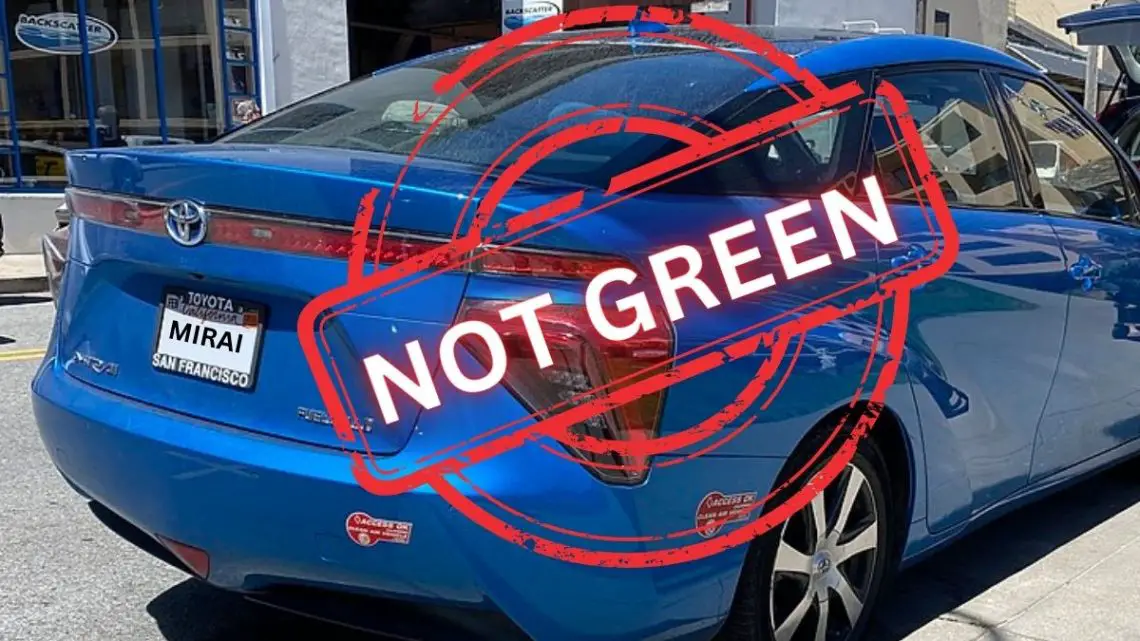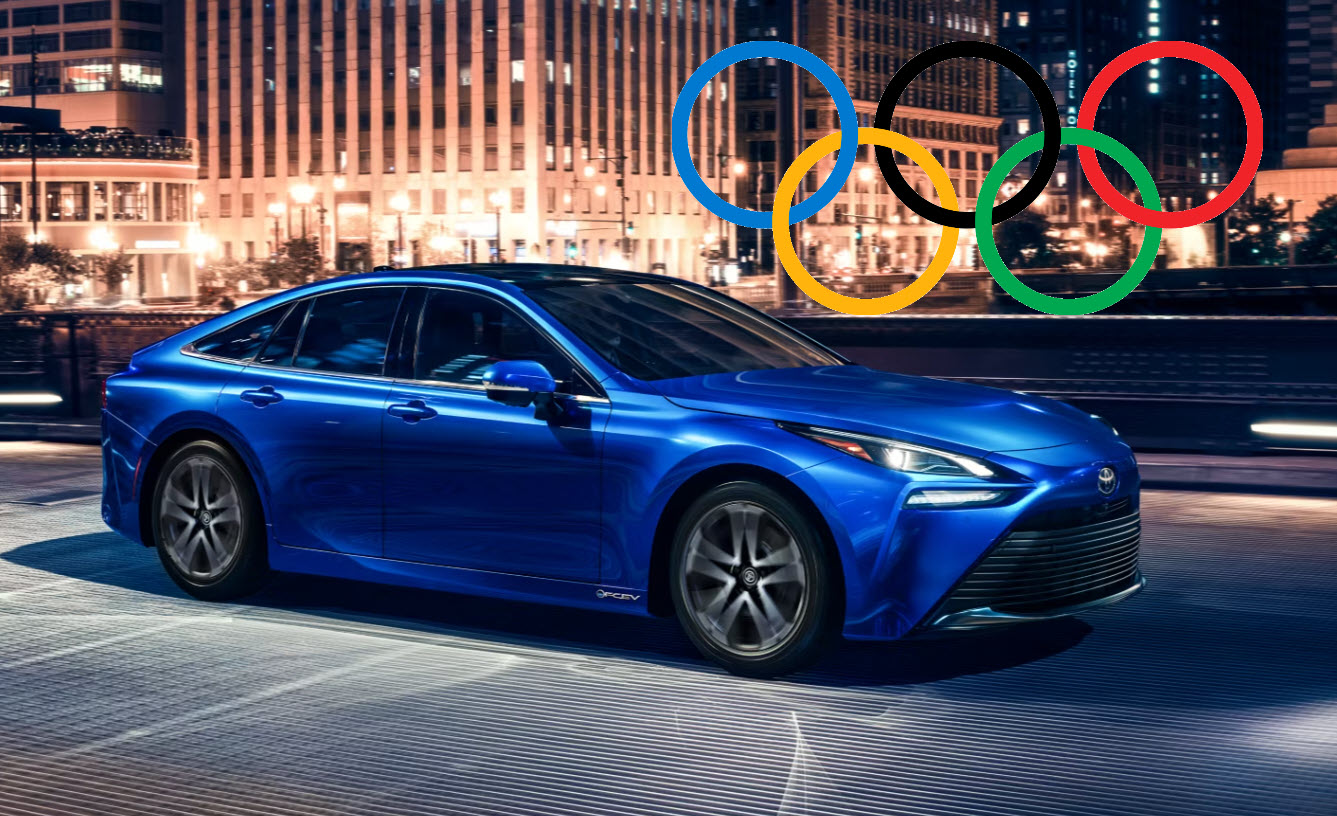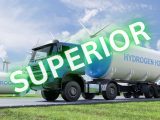
120 scientists write open letter to remove Toyota hydrogen car from Paris Olympics
July 18, 2024The Mirai is an official vehicle of the games, but the scientists want this to change.
A group of engineers, scientists, and academics recently wrote an open letter calling for the organizers of the Paris Olympics to choose a different official vehicle than the Toyota Mirai hydrogen car.
The letter says the H2-powered vehicles undermine the Games’ green strategy
The letter pointed out that while hydrogen cars are indeed zero-emission vehicles, as they don’t emit any CO2 through their tailpipes as a result of operation, that’s not the only potential source of the greenhouse gas. The issue is that an estimated 96 percent of the H2 produced in the world continues to be made using processes powered by fossil fuels such as natural gas (methane).
As a result, the direct operation of the vehicles is carbon-free but fueling them is not. While some might point to electric vehicles as a cleaner alternative, it’s important to note that they have a similar issue. Electric vehicles also do not produce tailpipe carbon emissions. That said, they plug into the grid, and unless that grid is powered by renewable (or even nuclear) electricity generation, then they also rely on carbon emissions in order to operate.
500 Toyota hydrogen cars and 10 H2 coaches are included in the Games’ fleet
The official fleet of the Games is being supplied by Toyota. It includes 500 Mirai sedans, 10 H2-powered coach buses, and 1,150 electric vehicles. According to Toyota, it will be running the Mirais on H2 obtained from water electrolysis and organic matter, and those processes will be powered by renewable energy.

Still, the signatories of the letter are opposed to the promotion of the vehicle at all, because they say that consumers will not see the difference between the green hydrogen powering the cars at the Games, and the grey H2 they are most likely to be able to obtain if they purchase and operate a Mirai for themselves.
The letter called H2 passenger cars “scientifically misaligned with net-zero”
“We are writing to express our concern that Toyota’s promotion of a hydrogen car is scientifically misaligned with net-zero and will damage the reputation of the 2024 Games,” said the letter written by the engineers, scientists and academics from Oxford University, the University of Cambridge, and the University of Colorado. “Opportunity remains to reroute, and we urge that you require Toyota to replace the Mirai with a Battery Electric Vehicle as the official Games vehicle.”
A hydrogen car fleet in the “greenest-ever Games”
Among the reasons that the scientists felt it was important to write their letter during this particular set of Olympic Games, despite the fact that this isn’t the first time that hydrogen cars and H2-powered vehicles have played a role in Games transportation, is that clean energy is a massive focus this time around.
The organizers of the Paris Olympics have set a goal to make the events the “greenest-ever Games.” Their target is to create half the carbon footprint during the Paris Olympics that were estimated to have been generated during the games in the 2010s. They are seeking to do this by powering the Games entirely on renewable energy.
Choosing more than one path
 Toyota chose to provide vehicles to the Games using a “multi-path strategy” for decarbonization. That said, critics of this strategy have said that there isn’t enough focus on electric vehicles in the world’s largest automaker’s contribution.
Toyota chose to provide vehicles to the Games using a “multi-path strategy” for decarbonization. That said, critics of this strategy have said that there isn’t enough focus on electric vehicles in the world’s largest automaker’s contribution.
Toyota’s hydrogen car and coach addition to the fleet is a reflection of its own investment in both H2 and electric vehicle technology. Though H2 is rapidly rising in popularity in larger vehicles, Toyota is one of the only automakers in the world with a focus in the passenger vehicle category.



 With over 15 years of reporting hydrogen news, we are your premier source for the latest updates and insights in hydrogen and renewable energy.
With over 15 years of reporting hydrogen news, we are your premier source for the latest updates and insights in hydrogen and renewable energy.
This only goes to show the bias is still towards supporting the fossil fuel lobby. These cars will be powered by green hydrogen produced through electrolosys from non fossil fuel produced electricity.
Toyota is to be applauded. But it can go a step further. In an ideal world, the iron that Toyota uses for its engine blocks; and the steel, aluminium, rubber, glass and plastics that it uses in the chassis and body of the car, should be mined and refined from source materials using renewable energy. There needs to be a green energy audit for the entire production of the car, including the welding and high temperature painting processes. This is a general observation, not directed at Toyota. There is a risk that the marvellous benefits of H2 combustion might serve to hide the 9/10 of unsustainable production which remain submerged and hidden like a glacier beneath the shiny surface of the green ocean.
I think the scientist are being paid off or terribly miseducated. Possibly big oil got to them. The 2010 Winter Olympics in Vancouver had hydrogen fueled busses to transport people to and from events. The H2 was obtained by steam reformation of methane on the other side of the country instead of being produced with hydro power near Vancouver. It was so stupid to transport liquid H2 across Canada instead of producing it with electrolysis near the games.
We just can’t win
Has hydrogen from methane EVER been used for energy? How much? What fraction of fertilizer H2 has been diverted to energy? Has anyone in the fertilizer supply chain ever committed to divert H2 to non-material applications? IF no H2 ever has, or will ever be, used for mobility, harping on fertilizer’s CH3 origin in car stories is disingenuous to put it generously.